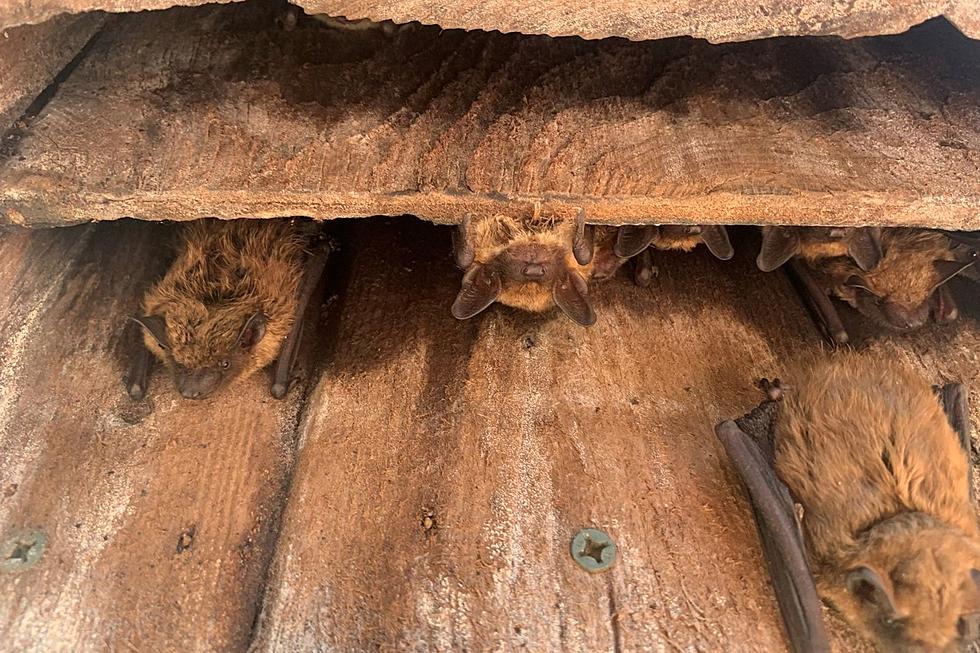
Got bats and know how to count? NJ needs your help
🔢 The Conserve Wildlife Foundation of NJ is looking for summer bat counters
🔢 Just count bats as they exit their roosting spots four times this summer
🔢 The data helps keep tabs on how NJ's bats are distributed
If you know where bats roost, you can help keep tabs on them in New Jersey.
The Summer Bat Count conducted by The Conserve Wildlife Foundation of New Jersey is a volunteer-based project that relies on knowing where bats are roosting in New Jersey. These could be attics, barns, bat houses, churches, and trees.
Volunteers conduct these surveys at these known bat roosting sites to assess their occupancy.
“The data of this survey helps gives us a better understanding of population estimates and how those change over time, the reproductive success, where it’s choosing to roost, and where the bats are distributed throughout New Jersey,” said Leah Wells, assistant wildlife biologist at The Conserve Wildlife Foundation of New Jersey.
When are the bat counts held?
Summer bat participants are asked to conduct four bat counts per summer: two between May 15 and June 21, before pups can fly, and two more between July 6 and July 31 when pups are flying and exiting the roost with their mothers, Wells said.
Making sure volunteers do all four bat counts allows biologists to best compare data from year to year and between sites.
What is the purpose of the bat counts?
The Summer Bat Count was created in 2003 by the Conserve Wildlife Foundation and the state’s Endangered and Nongame Species Program.
When White Nose syndrome hit in 2019, Wells said the survey helped them quantify the steep decline in little brown bat numbers and the increase in big bat numbers.
White Nose syndrome is a fungal disease that affects hibernating bats, Wells said. It causes bats to wake up while they’re hibernating, more frequently than they normally would. When they wake up, they’re using energy reserves that would keep them alive during the winter. The syndrome causes the bats to starve to death.
Since 2006, White Nose syndrome has killed over 6 million bats across the country and tens of thousands in New Jersey alone, she added.
“Using this data from all these years, we’re able to see how their populations are changing. All this is important because we want to protect our New Jersey bats. We want to educate homeowners and the public on the benefits bats provide us and our environment, and maybe persuade some people to keep bats in their home,” Wells said.
What are some of the benefits of bats?
Bats are often misunderstood but they are great to have on your property and provide a lot of ecosystem services, Wells said. Bats eat a lot of pesky bugs like mosquitoes, and moths. They are the only predator of nighttime flying insects.
Worried about rabies? Don’t. Wells said less than 5% of the bat population in the world carries rabies. If you do have to handle a dead bat, she urges people to wear leather gloves.
What are the bat count rules?
There are three fairly simple rules every time a volunteer conducts one of the four recommended summer bat counts.
First, once you know where the bats are roosting, arrive at the bat roost by sunset time. Wells said the bats will begin to emerge 10 to 15 minutes later, at dusk, Wells said.
Make sure the air temperature is at least 55 degrees. Bats don’t normally fly below 50 degrees, she added. Make sure it’s not raining and the wind speeds are no more than 15 mph.
Third, sit or stand outside so that the bats’ exit point is visible from a comfortable distance. More than one person might be needed if bats are exiting from multiple points.
Don’t shine a flashlight on the bats as they are shy and the light might keep them from coming out for their nightly insect feeding.
“Sit out there for an hour and record all the bats flying out either by tallying or keeping a clicker on your or marking it down on a piece of paper,” Wells said.
The data form can be found online. Once you complete the data form, email all the information to Wells or mail the sheet at the end of the summer.
Do not enter bat roosts or handle the animals. Also, if a bat roost is on someone else's property, please ask permission to count.
Then wildlife biologists will examine the trends from the collected data sheets. For example, Wells said, there is a very popular bat roost in Sussex County that has hundreds of bats that fly out of it. Every year, we’ll see that number increase, and tells us the population is increasing over time.
Is the bat population in danger in New Jersey?
Bats that typically roost in a person’s home are usually big brown bats. These numbers have been increasing but little brown bat numbers have decreased steadily since White Nose syndrome hit in 2019.
“We don’t think that their populations are really decreasing anymore from White Nose syndrome, which is good, but it’s hard to tell if there’s a population increase because bats only have about one baby a year so that increase is very slow,” Wells said.
The Indiana Bat is one of the nine bat species found in New Jersey. Wells said it is the state’s only endangered bat and among the first animals to be listed under the U.S. Endangered and Nongame Species Act.
To help the Conserve Wildlife Foundation protect this endangered species in the state you can adopt an Indiana Bat.
Wells said if you like bird watching, you'll enjoy bat watching!
Jen Ursillo is a reporter and anchor for New Jersey 101.5. You can reach her at jennifer.ursillo@townsquaremedia.com
Click here to contact an editor about feedback or a correction for this story.
LOOK: Here are the states where you are most likely to hit an animal
More From New Jersey 101.5 FM









